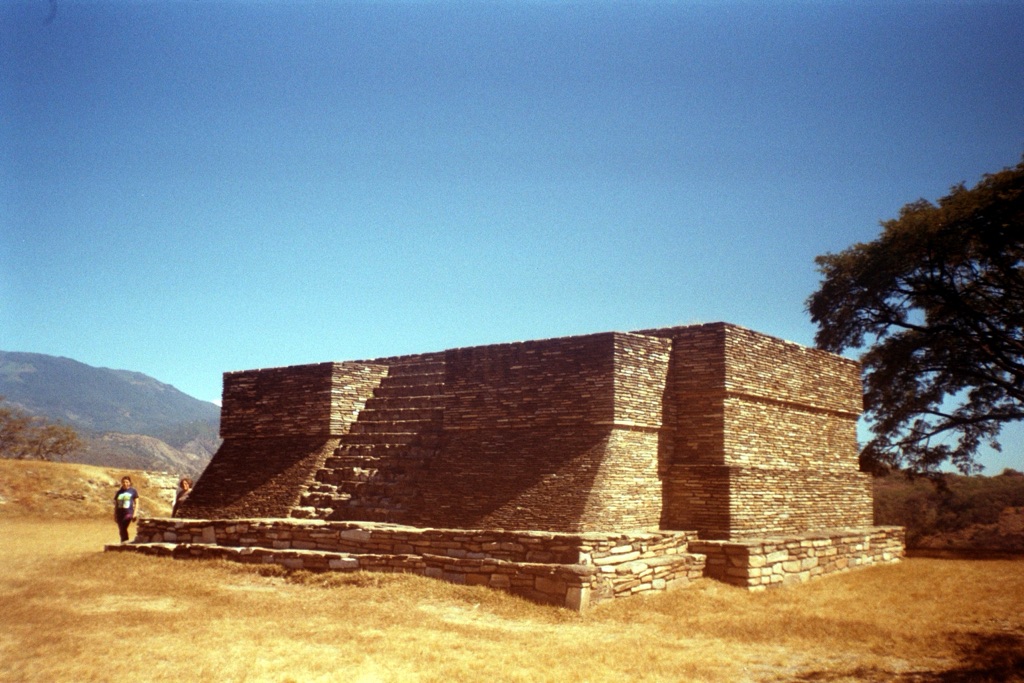Mixco Viejo, also known as Jilotepeque Viejo, is a pre-Columbian archaeological site in the highlands of Guatemala. It was the capital of the Poqomam Maya kingdom, and its ruins offer a glimpse into the complex social and political structures of the Maya civilization. The site features a series of plazas, temples, palaces, and ball courts, showcasing the architectural prowess of its builders. Mixco Viejo played a significant role in the region’s history before its eventual conquest by the Spanish in the early 16th century.
Get your dose of History via Email
Historical Background of Mixco Viejo
Mixco Viejo was discovered in the early 20th century, although local knowledge of the site persisted through time. The site was first documented by archaeologists in the 1950s. It was built by the Poqomam Maya, a group that settled in the region around the 12th century AD. The city thrived as a regional power, controlling trade and politics in the area.
The Poqomam were skilled builders and artisans, as evidenced by the remains of the city. They constructed Mixco Viejo on a defensible hilltop, surrounded by deep ravines. This strategic location served as a natural fortress against invaders. The city’s architecture and layout reflect a well-organized society with a clear hierarchy.
Later inhabitants included the Spanish, who conquered the city in 1525. The conquest was a brutal affair, with many of the city’s residents killed or enslaved. After the fall of Mixco Viejo, the site was largely abandoned, and the jungle reclaimed it over the centuries.
Mixco Viejo was not just a political center; it was also a religious hub. The site was the scene of significant religious ceremonies and rituals, which were integral to the Poqomam culture. The Spanish conquest marked the end of these practices at Mixco Viejo.
The site’s historical importance lies not only in its role as a capital city but also as a battleground during the Spanish conquest. It stands as a testament to the resistance of the Poqomam people against the Spanish forces. Today, Mixco Viejo is an important cultural heritage site, providing insights into the pre-Columbian history of Guatemala.
About Mixco Viejo
Mixco Viejo is a complex of stone structures spread over several acres. The site includes more than 120 structures, including temples, palaces, and two ball courts. The buildings are constructed from local stone, and many feature intricate carvings and stucco work.
The city was designed with a central plaza, around which the most important buildings were constructed. This design indicates a society with a strong central authority. The plazas served as public spaces for ceremonies and gatherings, highlighting the community’s social aspects.
The temples at Mixco Viejo are particularly noteworthy. They feature tall, steep staircases leading to the top, where rituals were performed. The palaces were likely the residences of the elite and are characterized by their larger size and more elaborate decoration.
The ball courts at Mixco Viejo are indicative of the importance of the ballgame in Maya culture. The game had religious and political significance and was often associated with mythology and the movement of celestial bodies.
The construction methods used at Mixco Viejo were typical of Maya architecture, including the corbel arch technique. This method allowed the Maya to build impressive, stable structures without the use of true arches or mortar.
Theories and Interpretations
Several theories exist about the use and significance of Mixco Viejo. Some suggest it was a ceremonial center, while others believe it was a fortified stronghold. The presence of multiple temples and palaces supports the idea of a multifunctional site.
The exact purposes of some structures remain a mystery. Archaeologists have had to interpret their functions based on similar sites and historical records. For example, the ball courts are understood to be more than just sporting venues due to their sacred connotations.
Dating of Mixco Viejo has been carried out using methods such as radiocarbon dating and pottery analysis. These techniques have helped establish the timeline of the site’s occupation and use.
One of the most intriguing aspects of Mixco Viejo is its strategic location. Theories suggest that its position was chosen for defense, trade control, or both. The site’s layout and fortifications lend credence to these interpretations.
Despite the research, Mixco Viejo still holds many secrets. Ongoing archaeological work continues to uncover new information, shedding light on the complex history of the Poqomam Maya and their capital city.
At a glance
Country: Guatemala
Civilization: Poqomam Maya
Age: 12th century AD
Conclusion and Sources
The information in this article has been obtained from the following reputable sources:

